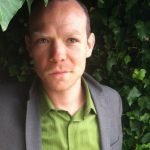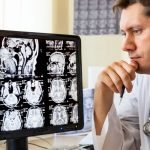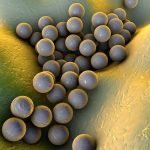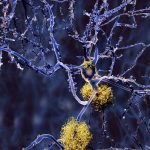New Organ Discovered in Human Body?
Node Smith, ND
In a study titled, “Structure and Distribution of an Unrecognized Interstitium in Human Tissues,” the interstitium has been suggested to actually be a discrete organ system.1 This would be one of the largest in the body, based on structure and distribution. The interstitium is a known space in the body that is filled with fluid and spans the entire body – but it has not been considered an organ until now.
“Interesting tissue” – interstitium
The senior author of the paper, Neil Theise, Professor of pathology at NYU Langone Health in New York, initially began looking into the interstitium thinking that it was an “interesting tissue.” The more he looked, the more he found that it met the criterion for being considered an organ – a tissue with a unitary structure, or a tissue with a unitary function. Theise explains, “This structure[interstitium], is the same wherever you look at it, and so are the functions that we’re starting to elucidate.”
Interstitium could be larger than the current largest organ of the body
The skin is considered the largest organ of the body, making up roughly sixteen percent of the body. The interstitium could be larger, making up about twenty percent (10 liters).
Research team looked at samples of the interstitium under confocal laser endomicroscopy with tissue samples bathed in fluorescent dye
For the study, the research team looked at samples of the interstitium under confocal laser endomicroscopy with tissue samples bathed in fluorescent dye. Samples were taken from human bile ducts from patients undergoing pancreatic surgery. On microscopy it was noted that there are spaces where fluid can collect. The spaces are not lymphatic channels, however, they do drain into lymph nodes. These spaces are not seen in dead tissue, when it is dehydrated the spaces become invisible.
A clearer understanding of this tissue is the next step for the research team
The next step will be to get a clearer understanding of this tissue, and how it interacts with the lymph system and other organ systems. It already throws light onto additional factors that allow for diseases, including cancer, to spread through the body, as well as dermal absorption of substances, and cellular communication within the skin.
Source:
- Benias PC, Wells RG, Sackey-aboagye B, et al. Structure and Distribution of an Unrecognized Interstitium in Human Tissues. Sci Rep. 2018;8(1):4947.
Image Copyright: <a href=’https://www.123rf.com/profile_decade3d’>decade3d / 123RF Stock Photo</a>
 Node Smith, ND, is a naturopathic physician in Portland, OR and associate editor for NDNR. He has been instrumental in maintaining a firm connection to the philosophy and heritage of naturopathic medicine among the next generation of docs. He helped found the first multi-generational experiential retreat, which brings elders, alumni, and students together for a weekend camp-out where naturopathic medicine and medical philosophy are experienced in nature. Four years ago he helped found the non-profit, Association for Naturopathic ReVitalization (ANR), for which he serves as the board chairman. ANR has a mission to inspire health practitioners to embody the naturopathic principles through experiential education. Node also has a firm belief that the next era of naturopathic medicine will see a resurgence of in-patient facilities which use fasting, earthing, hydrotherapy and homeopathy to bring people back from chronic diseases of modern living; he is involved in numerous conversations and projects to bring about this vision.
Node Smith, ND, is a naturopathic physician in Portland, OR and associate editor for NDNR. He has been instrumental in maintaining a firm connection to the philosophy and heritage of naturopathic medicine among the next generation of docs. He helped found the first multi-generational experiential retreat, which brings elders, alumni, and students together for a weekend camp-out where naturopathic medicine and medical philosophy are experienced in nature. Four years ago he helped found the non-profit, Association for Naturopathic ReVitalization (ANR), for which he serves as the board chairman. ANR has a mission to inspire health practitioners to embody the naturopathic principles through experiential education. Node also has a firm belief that the next era of naturopathic medicine will see a resurgence of in-patient facilities which use fasting, earthing, hydrotherapy and homeopathy to bring people back from chronic diseases of modern living; he is involved in numerous conversations and projects to bring about this vision.









